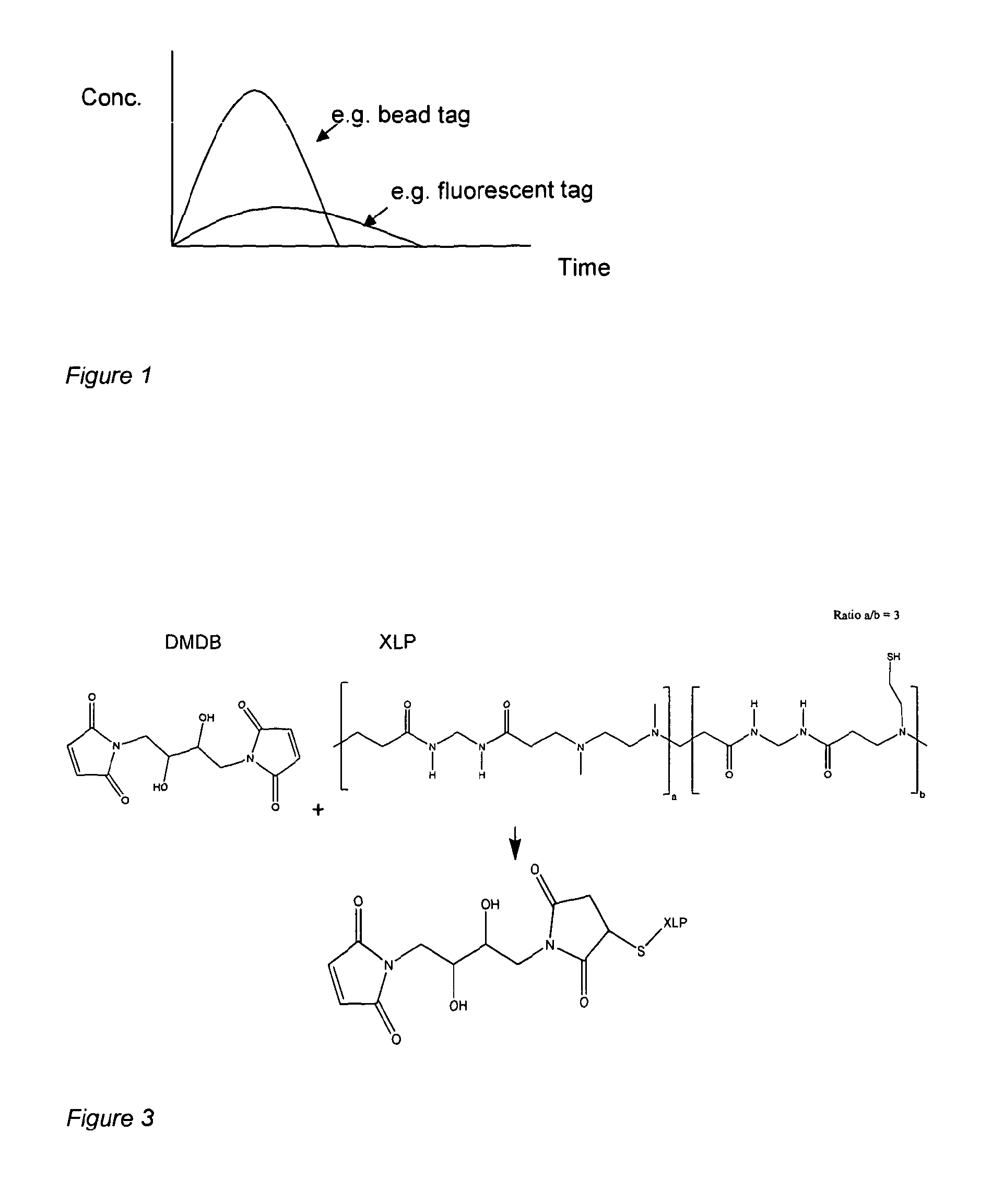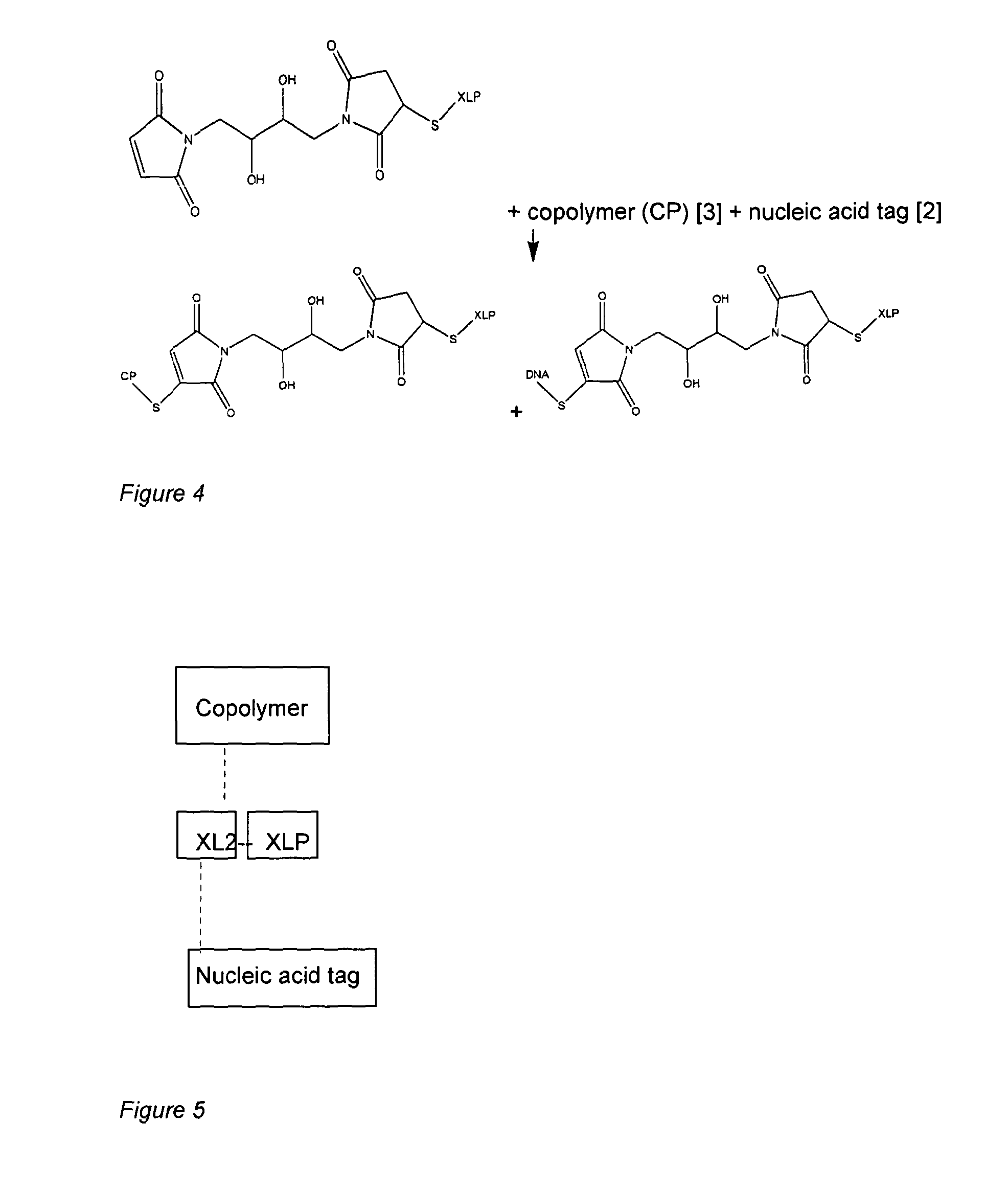Polymer Particle
- Summary
- Abstract
- Description
- Claims
- Application Information
AI Technical Summary
Benefits of technology
Problems solved by technology
Method used
Image
Examples
Embodiment Construction
Reaction of XLP-BMDB
[0096]The cationic cross-linking polymer, XLP, is firstly reduced to provide a free thiol (—SH) group. In a round bottom flask, equipped with a magnetic stirrer and nitrogen inlet, MBA / DMEDA22-SH (reduced XLP) polymer (72.5 mg, 50.26 mmol) was dissolved under an inert atmosphere in distilled water (14.5 ml). A two fold excess of 1,4-bismaleimidyl-2,3-dimhydroxybutane (BMDB) was used (compared to —SH of XLP, 6.10 mg). The BMDB was purchased from Pierce, Thermo Fisher Scientific, Loughborough, UK. The —SH groups were quantified using the Ellman's test (Ellman G. L 1959, Arch Biochem Biophys 82, 70-77). The reaction is shown in FIG. 3.
[0097]The BMDB was dissolved in DMSO (dimethylsulfoxide) or DMF (dimethylformamide) (4.676 ml). The BMDB solution was then added to the polymer solution, the pH was adjusted to 7 and the reaction mixture was allowed to react for 1 h at room temperature. The reaction mixture was ultrafiltered through a 1,000 nominal cut-off using distil...
PUM
| Property | Measurement | Unit |
|---|---|---|
| Time | aaaaa | aaaaa |
| Diameter | aaaaa | aaaaa |
| Fraction | aaaaa | aaaaa |
Abstract
Description
Claims
Application Information
 Login to View More
Login to View More - R&D
- Intellectual Property
- Life Sciences
- Materials
- Tech Scout
- Unparalleled Data Quality
- Higher Quality Content
- 60% Fewer Hallucinations
Browse by: Latest US Patents, China's latest patents, Technical Efficacy Thesaurus, Application Domain, Technology Topic, Popular Technical Reports.
© 2025 PatSnap. All rights reserved.Legal|Privacy policy|Modern Slavery Act Transparency Statement|Sitemap|About US| Contact US: help@patsnap.com



